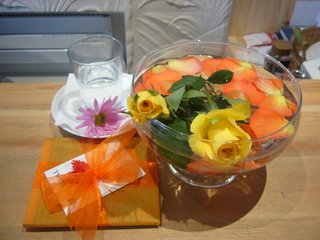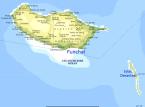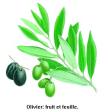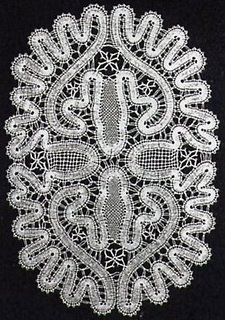
Katerina ! Arahnaki mou!
I loved all you have written about your trip to Vien and I am very glad once again to know you and to move our friendship to a more visual environment.
These are highlights about i planned to write about famous "St Valentine's Day" "Sevgililer Günü" in Turkish and "Agape ...something..." in Greek.
For sure St. Valentine day ( Sevgililer Günü / Lovers Day in Turkish) became a commercial day with full of advertising activities.
After a long time I realized that I detached myself from the gravity of St. Valentine Day – no hurry for celebration or gifts and no grief because there is nobody to celebrate...
February 14, Tuesday started with snow and an outside meeting, when i come back to the cafeteria i have seen these lovely, heart shaped pink cookies for “Sevgililer Günü”...
At the meeting we chat about St. Valentine in line with the day’s agenda and we all agreed that the best way to celebrating this unique day is “ being at home, wining and dining, music and candle light”...
My close friends know that, starting from first half of 2005 i became a TV-addicted. I watch almost all Turkish soap operas... Last year’s favourite was “Bir İstanbul masalı – An İstanbul tale” and “Haziran Gecesi – The June Night", if the translation is correct. This year without discussion my star is “Beyaz Gelincik – The white poppy”. I am in “platonic" –see Greek mythology is everywhere too:)-and "tele-love" with the main actor – Erkan Petekkaya. I think for the years – since teenage period- i am not in this kind of absurd position.
This afternoon i was thinking to post something about St. Valentine, my ideas to post a poem  of Greek &/ Turkish poet in English or the image of the Kiss by Gustave Klimt. It is a classic icon of love and lovers and until my trip to Spain i don’t like the style and the picture.. In Barcelona i met Klimt’s kiss a porcelain sculpture, what a concidence it was the week of February 10s. İn 2003 and again in Spain love was everywhere. That porcelain reproduction of the Kiss charmed me. The circular lines, soft pastel colors... I couldn’t afford to buy that object – a very famous boutique and the price was € 4000!- but i begged for the catalogue... So i have it at the end!
of Greek &/ Turkish poet in English or the image of the Kiss by Gustave Klimt. It is a classic icon of love and lovers and until my trip to Spain i don’t like the style and the picture.. In Barcelona i met Klimt’s kiss a porcelain sculpture, what a concidence it was the week of February 10s. İn 2003 and again in Spain love was everywhere. That porcelain reproduction of the Kiss charmed me. The circular lines, soft pastel colors... I couldn’t afford to buy that object – a very famous boutique and the price was € 4000!- but i begged for the catalogue... So i have it at the end!
While i was googling about the Kiss of Klimt I met Brancusi’s Kiss – a sculpture. And the sculpture yesterday evening on the TV. Beyaz Gelincik Ceren bought and placed to their bed-room :-0. It was very interesting to see that the “Kiss”es in everywhere too.
- Gustav Klimt (1862-1918) ’s “Kiss”
His style is highly ornamental (which personally I love-Ç) . The Art Nouveau movement favored organic lines and contours. Klimt used a lot of gold and silver colors in his art work - certainly an heritage from his father's profession as a gold and silver engraver. Klimt's works of art were a scandal at his time because of the display of nudity and the subtle sexuality and eroticism. His best know painting The Kiss, was first exhibited in 1908. As everything coming out of Klimt's hands, it was highly controversial and admired at the same time.
Another interesting coincidence, the original Kiss is in Austria, where I intended to write after yours “Greek inn” J. And the style of the painting is defined as Symbolism.
İstanbul hosts an important Picasso exhibition in months, hopefully i am going to visit on next Wednesday. On March 24, there is a conference on Picasso and Klimt: comparison on two artists.
- Constantin Brancusi (1876-1975)’s Kiss

Although he was active mainly in Paris throughout his life, originally he was Romanian, he was from Balkans..
He preferred the technique of direct carving in stone -- a process newly popular among French sculptors in the early 1900s -- and was capable of reducing natural forms to near abstract simplicity. His work in both stone and bronze concentrated on variations of a small number of themes -- heads, birds, and his renowned couple embracing The Kiss.
The original Kiss is in limestone, and it is in States now ( The Louise and Walter Arensberg Collection -- Philadelphia Museum of Art -)
It is a coincidence or not, both Kisses are dated to 1908!
And now the Kiss for Orchestra!!! This is what I have found on the internet thru the googling for Klimt-Kiss... It is a clear evidence of impact of art. A master piece (in this case two master pieces) can touch somewhere and give inspiration to another piece of art.
The last word for red&pink hearts day, coming from our intersection point: Two Greek poems for love one is ancient the other is Rebetiko which is “ithaf edilmiş”=dedicated to a be-loved gold flower...
Sappho 610-580 B.C.translated by Willis B
KLEIS
I have a small daughter who is beautiful
like a gold flower. I would not trade
my darling Kleis for all Lydia or even
for lovely Lesvos.
NIGHTS I STAY AWAKE WITHOUT HOPE...
Rebetiko by Yannis Papaioannou, Translated by Gail Holst
-My small daughter .....My gold flower .... Christiana, London 1984-
Nights I stay awake without hope
Lonely I walk the streets.
In front of the bars of your window
I spend my sad hours.
How I long to meet you again,
To find our old joy once more,
To give you my kisses again
So my black saddness will leave me
But there where you are in a strange place,
Who knows where you wander now?
I wonder if you still think of me
Or suffer for someone else.
I will add more opinions and feelings into pictures later on for sure :) and create another post about Turks / Ottomans & Vien .
Love....
 Seattle! One of the most exciting things you can do there is to take a boat trip from a small town with a harbour north of Seattle and go our through the straights of the San Juan islands into the Pacific ocean to see the orca whales travelling to warmer waters. It takes a full day, but it is well worth it! The boat follows the whales from a distance but you can clearly see them swimming in and out of the sea. At the end of the trip, our boat sped up, went ahead and stopped on the path of the whales. The captain switched off the engine and we were waiting... when the whales arrived near the boat, they surfaced IN FRONT OF US and dived again, passing right under the boat! It was one of the most exciting pictures in my life, to see the mother whale and the baby into the green waters passing under the boat! I remember that I screemed. You will see also sea lions, bald eagles, seals, etc... but seeing the whales is the most exciting part of the trip.
Seattle! One of the most exciting things you can do there is to take a boat trip from a small town with a harbour north of Seattle and go our through the straights of the San Juan islands into the Pacific ocean to see the orca whales travelling to warmer waters. It takes a full day, but it is well worth it! The boat follows the whales from a distance but you can clearly see them swimming in and out of the sea. At the end of the trip, our boat sped up, went ahead and stopped on the path of the whales. The captain switched off the engine and we were waiting... when the whales arrived near the boat, they surfaced IN FRONT OF US and dived again, passing right under the boat! It was one of the most exciting pictures in my life, to see the mother whale and the baby into the green waters passing under the boat! I remember that I screemed. You will see also sea lions, bald eagles, seals, etc... but seeing the whales is the most exciting part of the trip.































